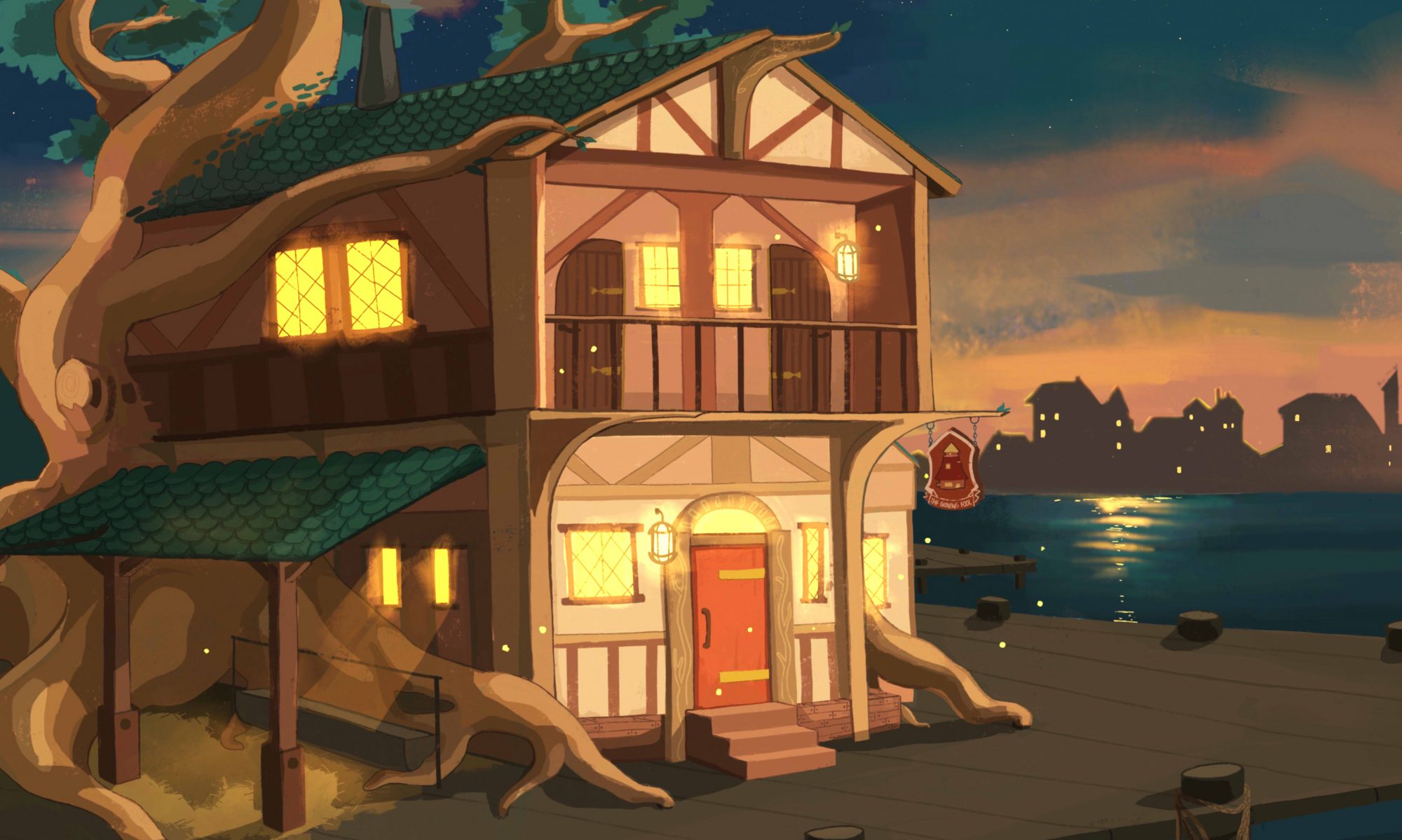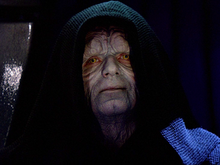It feels so good to be bad. When it comes to stories of heroism, it is very difficult to talk about heroes, without also talking about their villains. What is Batman without the Joker? Harry Potter without the threat of Voldemort? Or Frodo without Sauron. A villain helps define the hero, because they represent an obstacle and a constant source of tension for the hero to (hopefully) eventually overcome. The same is true in a D&D campaign. Every party of adventurers should ideally have a villain, a BBEG (Big Bad Evil Guy/Gal). Someone whom the party regards as their main threat, and an eventual challenge to be dealt with.
But coming up with an interesting villain can be a challenge. it is easy to create villain characters, but giving them depth and complexity may take some additional work. The purpose of this post is to try and give you some guiding principles and questions that will help you come up with your own BBEG that you can eventually throw at your party.
For the purposes of this post, it can be a bit vague to just talk about loose guidelines on creating a villain. So we will try and apply these principles to a popular villain example. And who better than the granddaddy of all Villains, than the original Dark Lord himself, Darth Vader.
Goals
Before you dive too deep into your BBEG, the very first question you should ask yourself is this: What is my BBEG’s goal?
Why does your villain do what they do? Is it because they are on a quest for revenge against a person of power? Do they see only chaos and disorder in the current political system, and regard themselves as civilization’s only hope to restoring order? Or are they simply seeking the secrets of lost knowledge? Regardless of what your BBEG’s goal is, it is best to start with that piece of information first, since it helps give you a good idea into the mindset of your BBEG.
Knowing your villain’s goal helps you get an understanding of everything that they are going to try to accomplish from this point onward. Similar to how we think, the moment a villain’s goal is made known, the necessary sub-goals that need to be addressed become apparent. This gives you a pathway for the different activities that your villain will be engaged in for the duration of your campaign. These different activities also give you opportunities for your party to interact with the villain, either directly or indirectly.
Additionally, knowing your villain’s goals makes it easier for you to chart out your villain’s position in relation to the party. It is entirely possible that your BBEG’s stated objectives don’t directly oppose that of the party. Meaning that it is entirely possible for your BBEG and party to potentially work together, or even ally themselves in some circumstances.
Turning this to our example case, Darth Vader. From his appearances in all six of the original Star Wars movies (up till he saved Luke from Palpatine), we can say with some certainty that Vader’s ultimate goal was Power. This was driven by different forces, the desire to save Padme in the prequels, vs. the desire to rule the galaxy in the original trilogy. But the desire for power was what remained consistent.
It was Vader’s desire for power that led him to taking several actions in the movies. Because he was promised power from Palpatine, Vader chose to join the Sith, and he chose to exterminate the Jedi. It was the constant promise of being given more power (either in the Force, or political) that he remained as Palpatine’s chief imperial enforcer.
But it was also this pursuit of power that led Vader to asking Luke to join him. As we mentioned, a BBEG’s stated objective doesn’t necessarily have to directly oppose the hero’s. Because Vader’s ultimate objective was power, it was entirely in character for him to ask Luke to join him in deposing Palpatine (since he knew he couldn’t defeat Palpatine alone), and ruling the galaxy as father and son.

Means
This refers to the cumulative abilities, resources, and connections that your villain may use to achieve their goals. Being able to put down on paper the villain’s different abilities is helpful for a number of different reasons. Most important of them is that defining what the villain currently has, also outlines what they still need to acquire in order to accomplish their goals (i.e. helps identifying sub-goals). Identifying the villain’s available resources also gives you an idea of what their limitations are as a character. This can then help inform you on what possible decisions they need to make in order to progress further towards their goal. Does your villain need the help of other factions or characters in order to get what they want? Do they need to gather additional resources? Or do they need a very specific artifact?
In the scenario wherein your villain and your party will be in direct opposition with each other, identifying your villain’s available resources also helps you figure out what possible obstacles your villain could realistically “throw” at the party in order to stop them.
In the case of Darth Vader, we could reasonably breakdown his available resources as follows:
| Means | Category | Implication |
| Sith Lord | Ability | – Master lightsaber duelist – Master Force user – In-tune with the Force |
| Apprentice to Palpatine | Connection | – Guidance of a Sith Lord (his master) – Authority within the Empire |
| Officer of the Galactic Empire | Resources | – Nearly unlimited resources – Soldiers and Bounty Hunters |
Over the course of the Star Wars movies we’ve seen how Vader has leveraged the various resources at his disposal to sinister effect. But we’ve also seen how his acknowledgement of his strengths and weaknesses determined his decisions as a character. This is particularly true in two instances in the original trilogy.

In Episode V, following the Battle of Hoth, Vader puts a bounty on the heads of Luke, Han, and Leia. This led him to hiring the likes of Boba Fett. Which ultimately led to Han and Leia’s capture at Cloud City. But Vader was only really able to accomplish this because he had the monetary resources that come with being a high ranking member of the Galactic Empire. Without which he wouldn’t have been able to hire the infamous bounty hunter.
And then in Episode VI, the limitations of Vader’s power, and how that went into his thought process was in full view during the final scene between him, Luke, and Palpatine. Towards the end of Vader’s confrontation with Luke, he asked Luke to join him. He did this because he needed Luke’s power in order to defeat Palpatine and achieve his goal of ruling the Galaxy, of attaining ultimate power.

Relationships
The last major aspect about a villain to consider is their relationships.
- Who does your villain care about?
- Who does your villain fear?
- To what extents are they willing to go, to protect those they care for?
- To what extents will they avoid what they fear?
- How would your villain react when someone they cared about got hurt?
- How would they react when they learned a new piece of information about someone they cared for?
Answering these questions about your villain helps give you some indication about their personality. About what type of decisions they would make when faced with the changing circumstances that the party will be causing with their decisions. This would not only help you when you role-play this character. But also makes sure that they are acting consistently throughout the campaign.
When it comes to Darth Vader, his relationships are fairly clear-cut and very apparent throughout the movie.
| Person | Nature of Relationship |
| Luke | Intrigued, turned to “love”. Potential ally. |
| Palpatine | Feared, hated, and respected. To be deposed when possible. |
| Obi-wan (Ben) Kenobi | Hated, to be killed. |
| Officers of the Empire | Expendable. |
| Padme | Love. To be saved at all costs. |
These relationships paint a picture of Vader, and they make it very clear what type of character he is, as well as what led him to make the decisions he made. With the events that unfolded, and the information that was provided over all six of the movies we can get a sense of how his character has developed over time, and how the relationships that he has formed have molded him. Given the nature of the different relationships that Vader had cultivated, it isn’t so surprising the extent of his actions across all the movies.
Ultimately, this is the goal that you want to try to achieve with your BBEG for your campaign. You want to create a villain whom the players can somewhat understand why they are doing what they are doing. They don’t necessarily need to be able to completely empathize with your villain, but they at least need to understand that there is some internal logic at play with the actions that your villain undertakes. Paired with some compelling resources, and plot points, these would all hopefully add up to an engaging and immersive campaign.
Additional Viewing
Matt Colville did a wonderful video on how to create and run bad guys that I highly recommend you check out!
Earl is what you would call a Dungeons & Dragons addict. He watches D&D shows, prowls the D&D forums, and basically lives, breathes, and eats D&D (It’s no joke, he literally listens to the D&D Podcast while eating). He likes to be thought of as the “lead fool” as he guides us all through the silliness of D&D.
For his day-job. Earl is an ERP Consultant with the Nomura Research Institute (NRI). He is also a Shaper with the Global Shapers: Hong Kong Hub.






